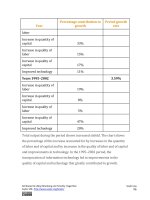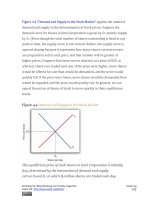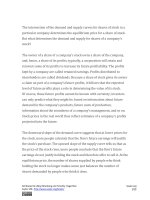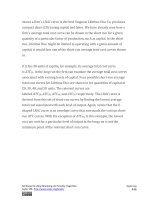Authors libby rittenberg 738
Bạn đang xem bản rút gọn của tài liệu. Xem và tải ngay bản đầy đủ của tài liệu tại đây (323.54 KB, 1 trang )
price-setting firm faces an upward-sloping supply curve S in Panel (b).
The price-setting firm sets the price consistent with the quantity of the
factor it wants to obtain. Here, the firm can obtain Q1 units at a
price P1, but it must pay a higher price per unit, P2, to obtain Q2 units.
Consider a situation in which one firm is the only buyer of a particular
factor. An example might be an isolated mining town where the mine is the
single employer. A market in which there is only one buyer of a good,
service, or factor of production is called a monopsony. Monopsony is the
buyer’s counterpart of monopoly. Monopoly means a single seller;
monopsony means a single buyer.
Assume that the suppliers of a factor in a monopsony market are price
takers; there is perfect competition in factor supply. But a single firm
constitutes the entire market for the factor. That means that the
monopsony firm faces the upward-sloping market supply curve for the
factor. Such a case is illustrated in Figure 14.2 "Supply and Marginal Factor
Cost", where the price and quantity combinations on the supply curve for
the factor are given in the table.
Attributed to Libby Rittenberg and Timothy Tregarthen
Saylor URL: />
Saylor.org
738









